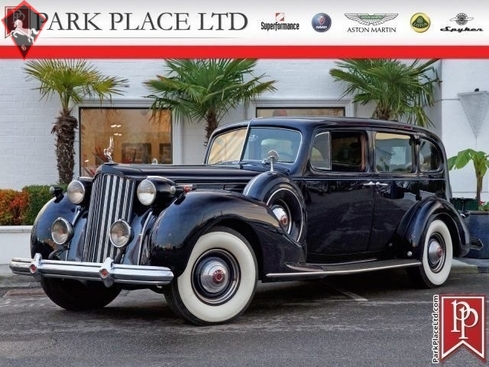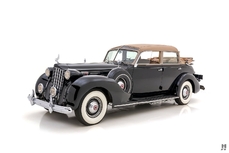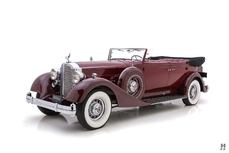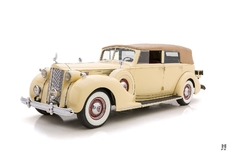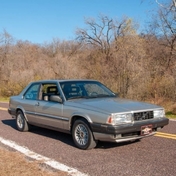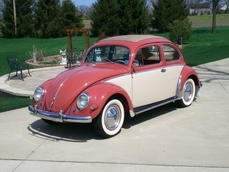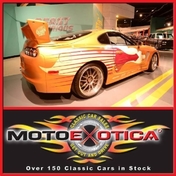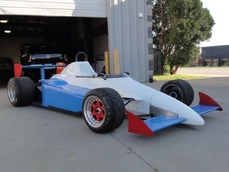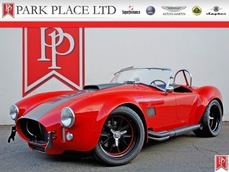Packard Twelve 1708 Limousine 1939
General description :
This 1939 Packard Twelve 1708 Limousine is an absolutely breathtaking example of an exceedingly rare pre-war classic. Finished in mile-deep Dark Blue that's accentuated with gorgeous brightwork and boasting a fabulous Black/Gray Cloth Interior, this stunning Packard Limo is powered by a 473ci V12 engine producing a factory-rated 175-horsepower and backed by a 3-Speed Manual with Synchromesh 2nd/3rd gears. The engine features; Aluminum Heads, Aluminum Pistons, Forged Crank, and single 2bbl Downdraft Stromberg. 5,750lb Curb Weight. This Packard's options consist of; Independent Front Suspension, Hydraulic Brakes, Dual Spare Tires, Dual Spare-Mounted Rear-View Mirrors, 16-Inch Steel Wheels with 'Packard Twelve' Covers, Dual 'Trippe Speedlight' Driving Lamps, Dual Turn Signals, Rear Suicide Doors, Leather Front Seat, Leather Front Door Panels, Cloth Rear Passenger Seat, Burled Walnut Interior Trim, Dual Glove Compartments, Rear Window Shades, and Glass Roll-Up Partition. Among the finest, this Packard runs & drives excellent and is certain to be the centerpiece of any collection. Drive it home and add it to yours today!Luxury was hard to come by in the 30's and the car market was getting tougher to stay afloat in. Packard was the standard for a while and built cars that exceeded expectations while surpassing the competition. The Packard Twelve Limousine was a sign of wealth in a time where there wasn't much wealth to be had. The 1708 version of the Packard Twelve marked the end of such enormous luxury cars. The engine was nearly perfected by 1939 and it still runs great today.For more information on this amazing 1939 Packard Twelve 1708 Limousine, or any of our 50+ classic and collectible cars always in stock, please contact our friendly and knowledgeable sales team, or always feel free to stop by our Bellevue, WA Park Place Ltd campus - Where we have over 40,000 sq ft of indoor showrooms filled with the finest cars. As part of the Park Place Motor Group family, which includes Park Place Aston Martin and Lotus of Bellevue, Park Place Ltd is Home to the West Coast's Most Diverse Inventory of Luxury, Exotic, Collectible and Special Interest Automobiles. With 200+ Always On Site, Nobody Has What We Have!
1939 Packard Twelve 1708 Limousine is listed for sale on ClassicDigest in Bellevue by Specialty Vehicle Dealers Association Member for $109950.
Car Facts
Car type : Car Make : Packard Model : Twelve Model Version : 1708 Limousine Engine size : 0.0 Model Year : 1939 Location : 13710 NE 20th Street Bellevue, WA 98005 Vehicle Registration : Undefined
109950 $
Seller Information
Specialty Vehicle Dealers Association
Specialty Vehicle Dealers Association Member, Contact no. +1-4255621000
Specialty Vehicle Dealers Association Member, Contact no. +1-4255621000
People who viewed this Packard Twelve also viewed similar Packard listed at ClassicDigest
Other cars listed for sale by this dealer
About Packard
Packard: A Comprehensive HistoryEarly Years and Foundation:
Founding: The Packard Motor Car Company was established in 1899 in Warren, Ohio, by James Ward Packard, William Doud Packard, and George Lewis Weiss.
Pioneering Luxury: Initially producing high-quality automobiles, Packard became synonymous with luxury, craftsmanship, and engineering excellence.
Notable Achievements and Contributions:
Packard Twin Six: Introduced in 1916, this V12-powered car established Packard as a premier luxury automobile brand.
Model Line Expansion: Packard expanded its lineup with various models, including sedans, coupes, convertibles, and limousines, catering to affluent customers seeking elegance and performance.
Engineering Innovations: The brand introduced several innovations, such as the first use of aluminum pistons, air conditioning, and the Ultramatic automatic transmission.
Ten Historically Significant Models with Technical Specifications:
Packard Twin Six (1916):
Engine: 7.3L V12 engine.
Performance: Around 85 horsepower.
Packard Eight (1930-1938):
Engine: Straight-8 engine with various displacements.
Performance: Ranged from 90 to over 130 horsepower.
Packard Super Eight (1939-1951):
Engine: Straight-8 engine.
Performance: Produced between 130 to 180 horsepower.
Packard One-Twenty (1935-1942):
Engine: Straight-8 engine.
Performance: Approximately 100 to 120 horsepower.
Packard Clipper (1941-1957):
Engine: V8 engine.
Performance: Ranging from 135 to 185 horsepower.
Packard Caribbean (1953-1956):
Engine: V8 engine.
Performance: Varying between 275 to 310 horsepower.
Packard Patrician (1951-1956):
Engine: Inline-8 and V8 engines.
Performance: Ranged from 150 to 180 horsepower.
Packard Hawk (1958):
Engine: V8 engine.
Performance: Produced around 275 horsepower.
Packard Executive (1956-1958):
Engine: V8 engine.
Performance: Varying between 240 to 290 horsepower.
Packard Predictor (1956):
Engine: Concept car showcasing design and technology.
Performance: Prototype model.
Legacy and Influence:
Quality and Elegance: Packard was revered for its exceptional build quality, refined styling, and luxury features, often considered on par with European luxury brands like Mercedes-Benz.
End of Production: The brand faced financial struggles in the 1950s, leading to its merger with Studebaker and eventual discontinuation in the late 1950s, marking the end of an era in American luxury automobiles.
Packard left an enduring legacy in the automotive industry, symbolizing elegance, engineering excellence, and a commitment to luxury that has been admired and respected by car enthusiasts worldwide.
